Comparing EYLF and FFSAC: Key Differences in Australian Pedagogy
VerifiedAdded on 2022/11/30
|5
|802
|58
Homework Assignment
AI Summary
This assignment provides a comparison of the Early Years Learning Framework (EYLF) and the Framework for School Aged Care (FFSAC), two crucial educational frameworks in Australia. The document identifies and describes three key differences between the frameworks, supported by page number references from the original documents. It also links Article 29 of the United Nations Convention on the Rights of the Child to the EYLF, highlighting its holistic and individualistic approach to child development and its alignment with fundamental human rights. The assignment emphasizes the importance of these frameworks in shaping early childhood education and school-aged care practices within the Australian context, drawing on resources such as the Commonwealth of Australia (2009) and Jones and Harcourt (2013). The document provides a concise overview of how these frameworks differ in their approach to children's learning and development, and how they align with international human rights standards.
1 out of 5
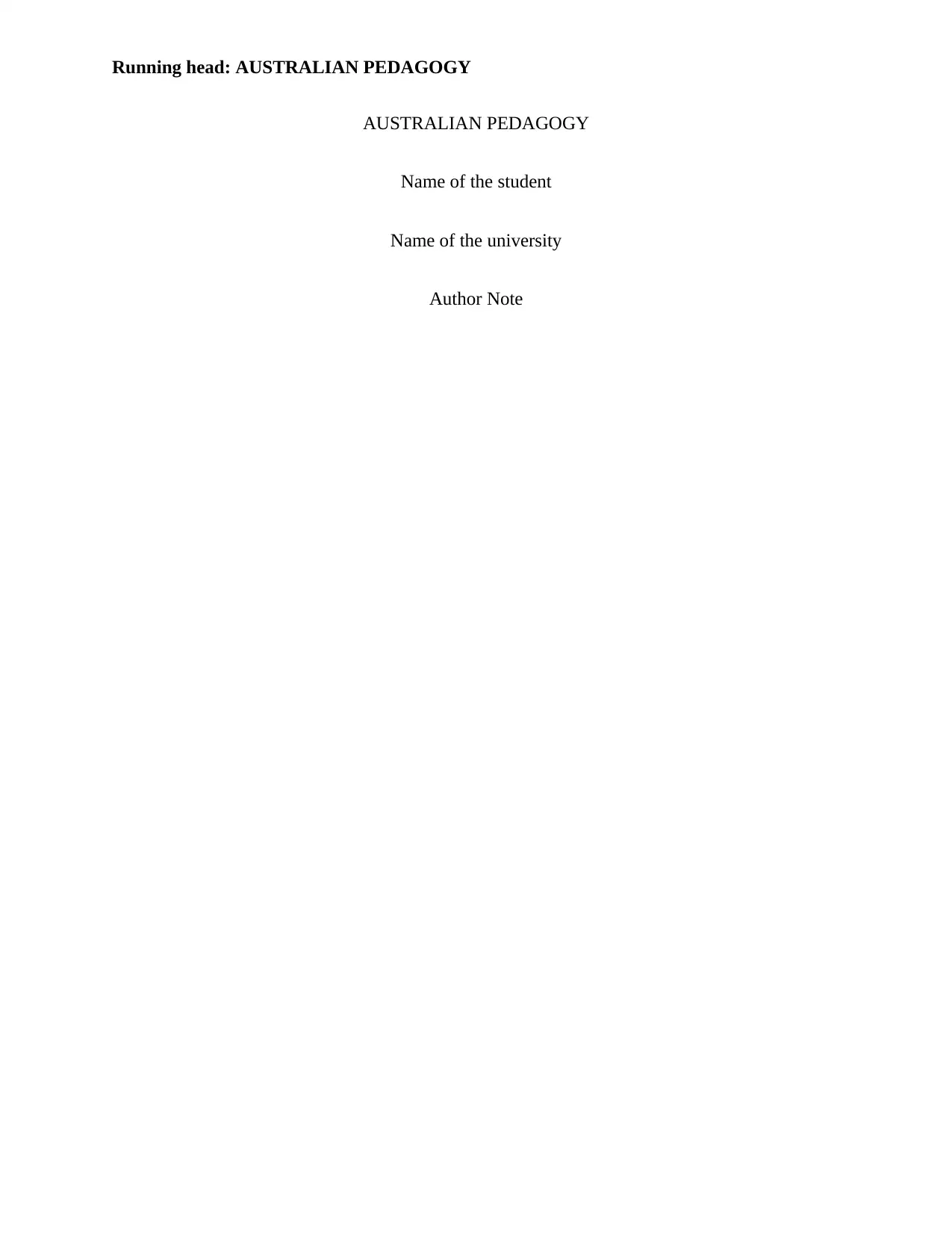
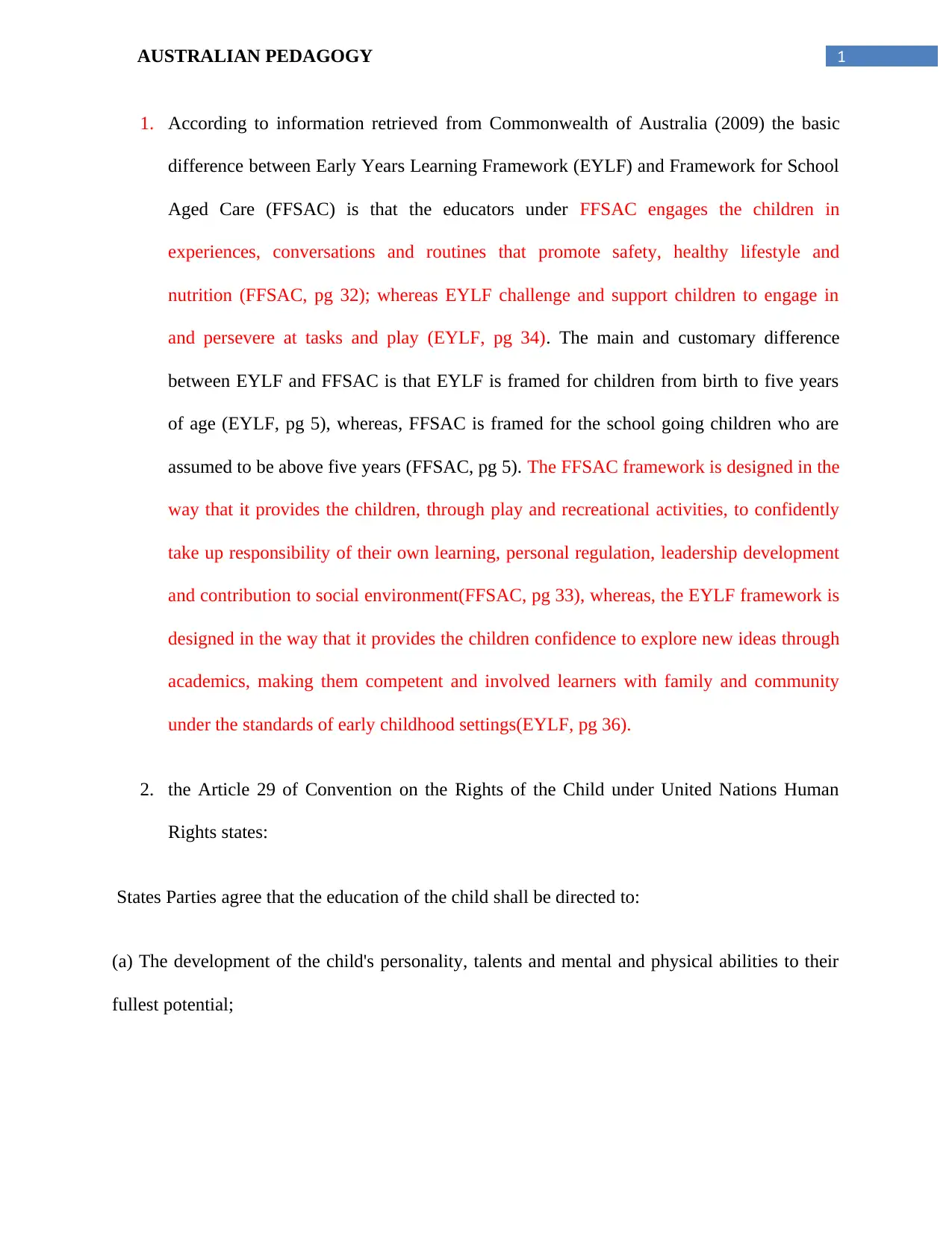
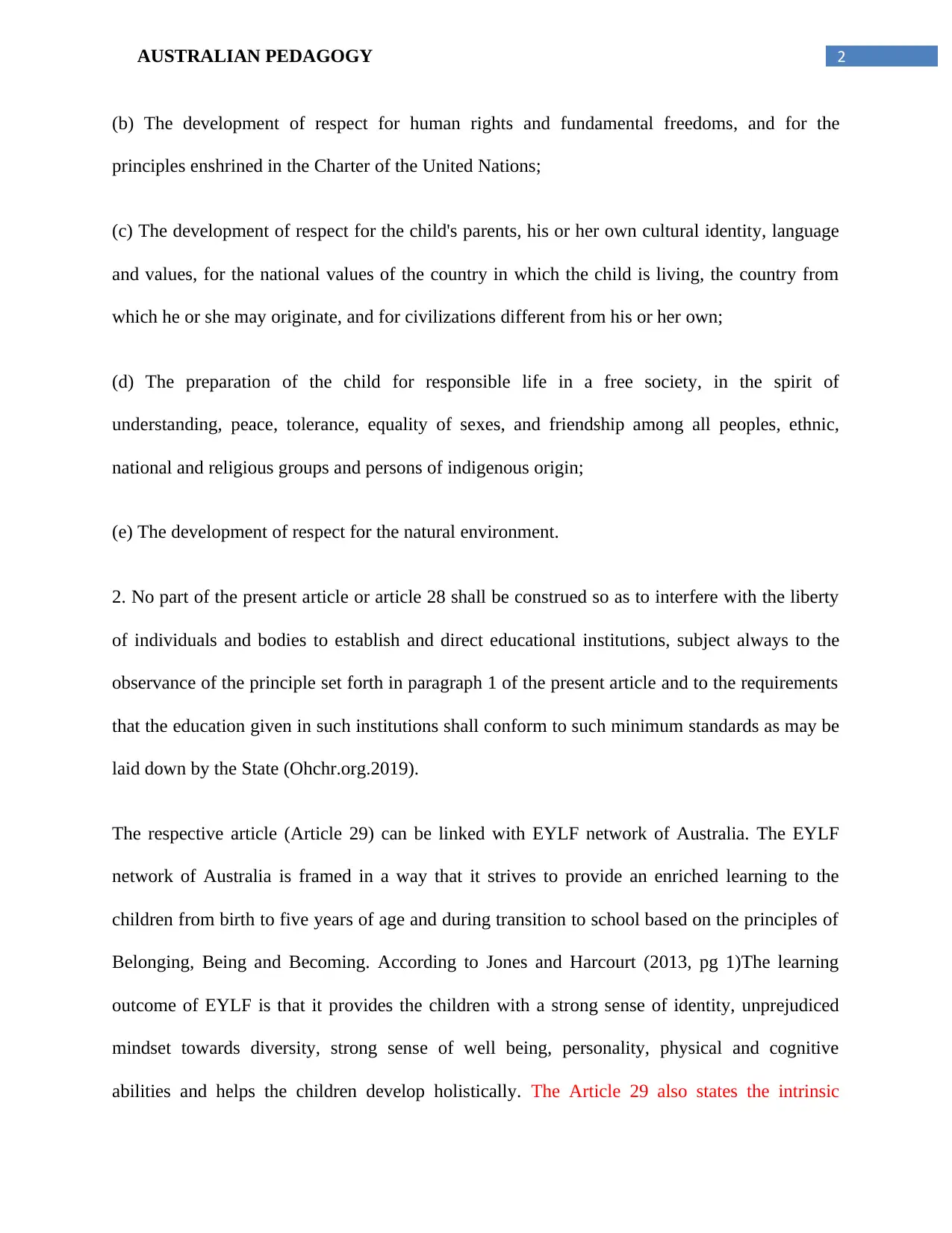

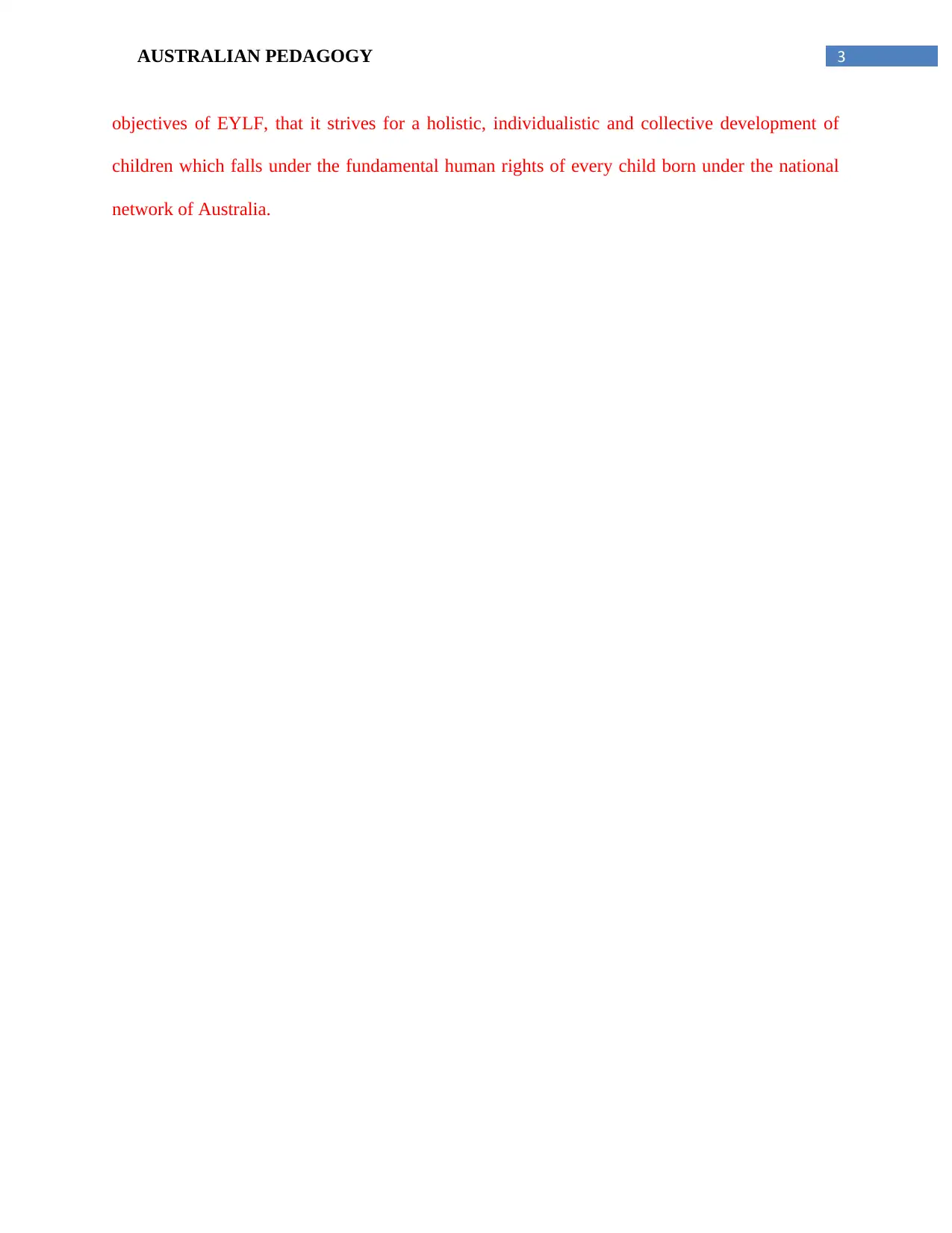
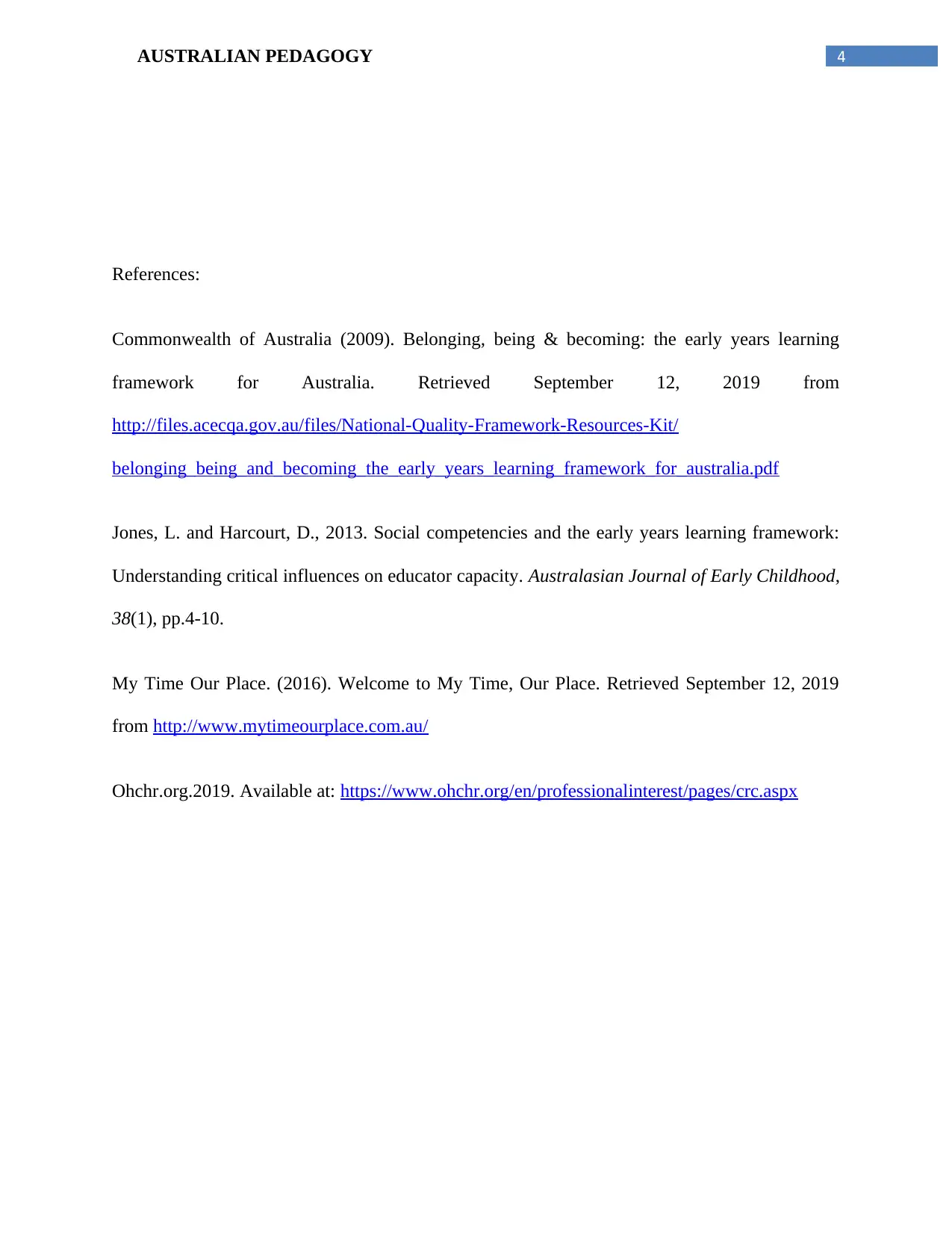






![[object Object]](/_next/static/media/star-bottom.7253800d.svg)